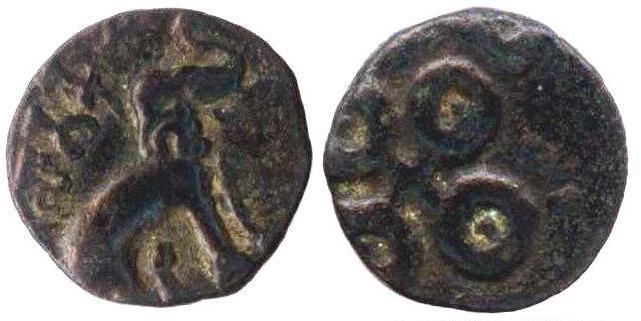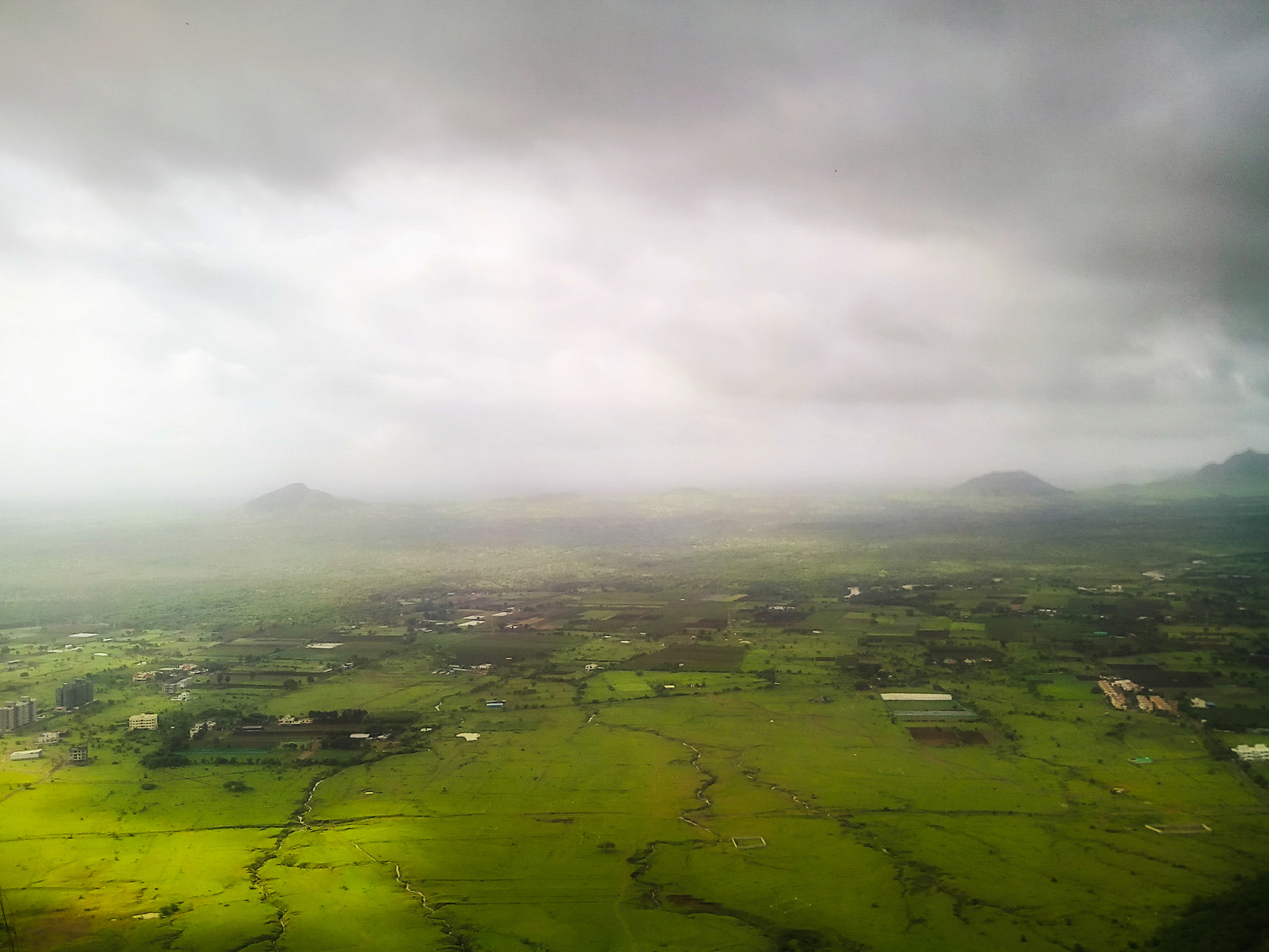|
Krishna (Satavahana Dynasty)
Kanha (Brahmi script:𑀓𑀦𑁆𑀳, ''Ka-nha'', c. 1st century BCE) was a ruler of the Satavahana dynasty of India. Historian Himanshu Prabha Ray assigns his reign to the period c. 100-70 BCE.Empires: Perspectives from Archaeology and History by Susan E. Alcocp.168/ref> Kanha has been mentioned as "Krishna" (IAST: Kṛṣṇa) in the Puranas. According to the Puranic genealogy, he was the brother of the first Satavahana king Simuka (whose name varies according to the different Puranas). Nasik cave Besides the legendary Puranas, Kanha's existence is also supported by an epigraphic record at Cave No.19 in the Nasik Caves. He is identified with the "Kanha-raja" (King Kanha) of "Satavahana-kula" (Satavahana family) mentioned in a Nashik cave inscription. The inscription states that the cave was excavated by ''maha-matra'' (officer-in-charge) of the shramanas (non-Vedic ascetics) during Kanha's reign. Based on this, Sudhakar Chattopadhyaya concludes that Kanha favoured Buddhism, ... [...More Info...] [...Related Items...] OR: [Wikipedia] [Google] [Baidu] |
Satavahana Dynasty
The Satavahanas (''Sādavāhana'' or ''Sātavāhana'', IAST: ), also referred to as the Andhras in the Puranas, were an ancient Indian dynasty based in the Deccan region. Most modern scholars believe that the Satavahana rule began in the late second century BCE and lasted until the early third century CE, although some assign the beginning of their rule to as early as the 3rd century BCE based on the Puranas, but uncorroborated by archaeological evidence. The Satavahana kingdom mainly comprised the present-day Andhra Pradesh, Telangana, and Maharashtra. At different times, their rule extended to parts of modern Gujarat, Madhya Pradesh, and Karnataka. The dynasty had different capital cities at different times, including Pratishthana (Paithan) and Amaravati (Dharanikota). The origin of the dynasty is uncertain, but according to the Puranas, their first king overthrew the Kanva dynasty. In the post-Maurya era, the Satavahanas established peace in the Deccan region and resisted ... [...More Info...] [...Related Items...] OR: [Wikipedia] [Google] [Baidu] |
Pandavleni Caves
The Nasik Caves, or Trirashmi Leni (''Trirashmi'' being the name of the hills in which the caves are located, ''Leni'' being a Marathi word for caves), are a group of 23 caves carved between the 1st century BCE and the 3rd century CE, though additional sculptures were added up to about the 6th century, reflecting changes in Buddhist devotional practices.Michell, 384 The Buddhist sculptures are a significant group of early examples of Indian rock-cut architecture initially representing the Early Buddhist schools tradition. Most of the caves are viharas except for Cave 18 which is a chaitya of the 1st century BCE. The style of some of the elaborate pillars or columns, for example in caves 3 and 10, is an important example of the development of the form. The location of the caves is a holy Buddhist site and is located about 8 km south of the centre of Nashik (or Nasik), Maharashtra, India. The Pandavleni name sometimes given to the Nasik Caves has nothing to do with the Pa ... [...More Info...] [...Related Items...] OR: [Wikipedia] [Google] [Baidu] |
Satavahanas
The Satavahanas (''Sādavāhana'' or ''Sātavāhana'', International Alphabet of Sanskrit Transliteration, IAST: ), also referred to as the Andhras in the Puranas, were an ancient Indian dynasty based in the Deccan Plateau, Deccan region. Most modern scholars believe that the Satavahana rule began in the late second century BCE and lasted until the early third century CE, although some assign the beginning of their rule to as early as the 3rd century BCE based on the Puranas, but uncorroborated by archaeological evidence. The Satavahana kingdom mainly comprised the present-day Andhra Pradesh, Telangana, and Maharashtra. At different times, their rule extended to parts of modern Gujarat, Madhya Pradesh, and Karnataka. The dynasty had different capital cities at different times, including Pratishthana (Paithan) and Amaravathi village, Guntur district, Amaravati (Dharanikota). The origin of the dynasty is uncertain, but according to the Puranas, their first king overthrew the Kan ... [...More Info...] [...Related Items...] OR: [Wikipedia] [Google] [Baidu] |
Mauryan Empire
The Maurya Empire, or the Mauryan Empire, was a geographically extensive Iron Age historical power in the Indian subcontinent based in Magadha, having been founded by Chandragupta Maurya in 322 BCE, and existing in loose-knit fashion until 185 BCE. Quote: "Magadha power came to extend over the main cities and communication routes of the Ganges basin. Then, under Chandragupta Maurya (c.321–297 bce), and subsequently Ashoka his grandson, Pataliputra became the centre of the loose-knit Mauryan 'Empire' which during Ashoka's reign (c.268–232 bce) briefly had a presence throughout the main urban centres and arteries of the subcontinent, except for the extreme south." The Maurya Empire was centralized by the conquest of the Indo-Gangetic Plain, and its capital city was located at Pataliputra (modern Patna). Outside this imperial center, the empire's geographical extent was dependent on the loyalty of military commanders who controlled the armed cities sprinkling it. During Asho ... [...More Info...] [...Related Items...] OR: [Wikipedia] [Google] [Baidu] |
Mahamatra
A Mahamatra (meaning "Officer of high rank") was an "officer of morality" established by the Indian Emperor Ashoka (reigned 269-233 BCE). Their full title was ''Dhaṃma Mahāmātā'', the "Inspectors of the Dharma". They were apparently a class of senior officials who were in charge various aspects of administration and justice. The Mahamatras are mentioned in several of the Edicts of Ashoka The Edicts of Ashoka are a collection of more than thirty inscriptions on the Pillars of Ashoka, as well as boulders and cave walls, attributed to Emperor Ashoka of the Maurya Empire who reigned from 268 BCE to 232 BCE. Ashoka used the expres ..., inscribed on rocks or pillars. They seem to have been an essential part of his government. Some were called "Dharma-Mahamatras" ("Mahamatras of Virtue"), who seem to have been established in the 14th year of Ashoka's reign (256 BCE). There were also Amta-mahamatras in charge of foreigners, and Stri-adhyaksha- mahamatras, in charge o ... [...More Info...] [...Related Items...] OR: [Wikipedia] [Google] [Baidu] |
Buddhism
Buddhism ( , ), also known as Buddha Dharma and Dharmavinaya (), is an Indian religion or philosophical tradition based on teachings attributed to the Buddha. It originated in northern India as a -movement in the 5th century BCE, and gradually spread throughout much of Asia via the Silk Road. It is the world's fourth-largest religion, with over 520 million followers (Buddhists) who comprise seven percent of the global population. The Buddha taught the Middle Way, a path of spiritual development that avoids both extreme asceticism and hedonism. It aims at liberation from clinging and craving to things which are impermanent (), incapable of satisfying ('), and without a lasting essence (), ending the cycle of death and rebirth (). A summary of this path is expressed in the Noble Eightfold Path, a training of the mind with observance of Buddhist ethics and meditation. Other widely observed practices include: monasticism; " taking refuge" in the Buddha, the , and the ; ... [...More Info...] [...Related Items...] OR: [Wikipedia] [Google] [Baidu] |
Historical Vedic Religion
The historical Vedic religion (also known as Vedicism, Vedism or ancient Hinduism and subsequently Brahmanism (also spelled as Brahminism)), constituted the religious ideas and practices among some Indo-Aryan peoples of northwest Indian Subcontinent (Punjab and the western Ganges plain) during the Vedic period (1500–500 BCE). These ideas and practices are found in the Vedic texts, and some Vedic rituals are still practiced today. It is one of the major traditions which shaped Hinduism, though present-day Hinduism is markedly different from the historical Vedic religion. The Vedic religion developed in the northwestern region of the Indian subcontinent during the early Vedic period (1500–1100 BCE), but has roots in the Eurasian Steppe Sintashta culture (2200–1800 BCE), the subsequent Central Asian Andronovo culture (2000–900 BCE), and the Indus Valley civilization (2600–1900 BCE). It was a composite of the religion of the Central Asian Indo-Aryans, itself "a syncreti ... [...More Info...] [...Related Items...] OR: [Wikipedia] [Google] [Baidu] |
Motilal Banarsidass
Motilal Banarsidass Publishing House (MLBD) is an Indian academic publishing house, founded in Delhi, India in 1903. It publishes and distributes serials, monographs, and scholarly publications on Asian religions, Buddhology, Indology, Eastern philosophy, history, culture, arts, architecture, archaeology, language, literature, linguistics, musicology, mysticism, yoga, tantra, occult, medicine, astronomy, and astrology. Amongst its publications are the 100 volumes of the Mahapuranas; the 50 volumes of the ''Sacred Books of the East'', edited by Max Müller; ''Bibliotheca Buddhica'' (30 volumes in 32 pts); Ramcharitmanas with Hindi and English translations; the Manusmriti in 10 volumes and the Sanskrit lexicon; and the 7 volumes of ''Encyclopedia of Indian Philosophies''. It also brings out books based on research and study conducted at organizations such as the Indian Council of Historical Research (ICHR), Indira Gandhi National Centre for the Arts (IGNCA), and Indian Coun ... [...More Info...] [...Related Items...] OR: [Wikipedia] [Google] [Baidu] |
Simuka
Simuka ( Dhamma lipi𑀲𑀺𑀫𑀼𑀓, ''Si-mu-ka'') was an Indian king belonging to the Satavahana dynasty. He is mentioned as the first king in a list of royals in a Satavahana inscription at Nanaghat. In the Puranas, the name of the first Andhra (Satavahana) king is variously spelt as Shivmukha, Sishuka, Sindhuka, Chhismaka, Shipraka, Srimukha, etc. These are believed to be corrupted spellings of "Simuka", resulting from copying and re-copying of manuscripts. Based on available evidence, Simuka cannot be dated with certainty. According to one theory, he lived in 3rd century BCE; but he is generally thought to have lived in the 1st century BCE. Epigraphical evidence strongly suggests a 1st century BCE date for Simuka: Simuka seems to be mentioned as the father the acting king Satakarni in the Naneghat inscription dated to 70-60 BCE, itself considered on palaeographical grounds to be posterior to the Nasik Caves inscription of Kanha (probably Simuka's brother) in Cave 19, d ... [...More Info...] [...Related Items...] OR: [Wikipedia] [Google] [Baidu] |
IAST
The International Alphabet of Sanskrit Transliteration (IAST) is a transliteration scheme that allows the lossless romanisation of Indic scripts as employed by Sanskrit and related Indic languages. It is based on a scheme that emerged during the nineteenth century from suggestions by Charles Trevelyan, William Jones, Monier Monier-Williams and other scholars, and formalised by the Transliteration Committee of the Geneva Oriental Congress, in September 1894. IAST makes it possible for the reader to read the Indic text unambiguously, exactly as if it were in the original Indic script. It is this faithfulness to the original scripts that accounts for its continuing popularity amongst scholars. Usage Scholars commonly use IAST in publications that cite textual material in Sanskrit, Pāḷi and other classical Indian languages. IAST is also used for major e-text repositories such as SARIT, Muktabodha, GRETIL, and sanskritdocuments.org. The IAST scheme represents more than a ... [...More Info...] [...Related Items...] OR: [Wikipedia] [Google] [Baidu] |
Nasik
Nashik (, Marathi: aːʃik, also called as Nasik ) is a city in the northern region of the Indian state of Maharashtra. Situated on the banks of river Godavari, Nashik is the third largest city in Maharashtra, after Mumbai and Pune. Nashik is well known for being one of the Hindu pilgrimage sites of the Kumbh Mela, which is held every 12 years. Nashik is located about 190 km north of state capital Mumbai. The city is called the "Wine Capital of India" as more than half of India's vineyards and wineries are located here. Around 90% of all Indian wine comes from the Nashik Valley. Nashik is one of the fastest-growing cities in India. It has been a major industrial center in automobile hub. The city houses companies like Exxelia, Atlas Copco, Robert Bosch GmbH, CEAT Limited, Crompton Greaves, Graphite India, ThyssenKrupp, Epcos, Everest Industries, Gabriel India, GlaxoSmithKline, Hindustan Coca-Cola, Hindustan Unilever Limited, Jindal Polyster, Jyoti Structures, Kirloske ... [...More Info...] [...Related Items...] OR: [Wikipedia] [Google] [Baidu] |





.png)


